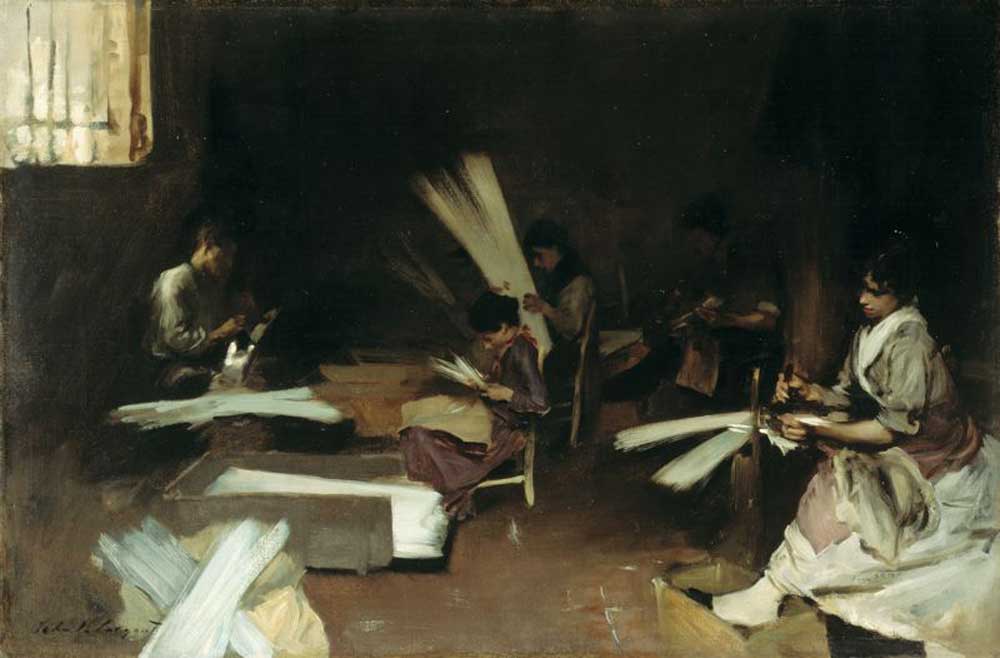|
Venetian
Glass Workers
John
Singer Sargent
-- American painter
1880-82
The
Art Institute of
Chacago, IL
Oil on
canvas
55.9 x
83.8 cm (22 x
33 in.)
Mr.
and Mrs. Martin
A. Ryerson Collection
Jpg: The
Art Institute of Chacago
In many of
Sargent’s Venetian Studies
of 1880 and 1882 he shows Venetian women stringing glass beads for the
tourist trade. In a footnote of Linda Ayres essay, she explains that
what they are holding are long
colored glass tubes.
These glass tubes
(also called cane)
were probably made in Murano, then cut to bead size and passed on to
women
bead stringers. It appears that, in this scene, the glass tubes are
being
cut.
What we are seeing
is an early stage
of the bead creation. After they have been cut, the individual beads
are
then sometimes re-fired to inlay other glass for mosaics and
designs.
These were done by hand and one at a time.
The image of
Sargent's painting is
woefully inadequate at showing, without seeing the original, what
he's
been able to accomplish. Linda Ayres describes it this way:
Two
men (the first
we have seen in Sargent’s interior Genre paintings) and three women
emerge
ghostlike from the extremely dark background. But the glass workers are
not the true subjects of the painting. Light – vibrant, shimmering
light
– is Sargent’s focus in this work. A window to the left and another ,
unseen
window admit light to the workroom. Light reflects dramatically on
white
and pale blue glass. Sargent freely wielded his brush throughout the
painting,
especially on the thin glass bundles. In a technical tour de force,
he rendered each bundle with just one brush stroke, the individual
bristles
of his brush creating separate rods.
(Linda Ayres,
Patricia Hills book,
P.55.)
In Sargent's painting Italian
Girl
with Fan, David McKibbin has speculated that the model Gigia
Viani is actually holding is a bundle of glass tubes prior to being cut

Italian
Girl with Fan
1882
Notes:
One of the earliest
detailed descriptions
of the Venetian bead industry is contained in an obscure book published
in French in 1847 by the Venetian glassmaker Domenico Bussolin.
Intended
as a "Guide for the Foreigner, " this work contains good information
concerning
bead manufacturing techniques and the socioeconomic aspects of the
industry.
To make this text generally available, a translation was prepared by
Karklins
and Adams: Dominique Bussolin on the Glass-Bead Industry of Murano
and
Venice (1847), by Karlis Karklins with Carol F. Adams
Exhibitions
John Singer Sargent,
An Exhibition -- Whitney
Museum, NY & The Art Institute of Chicago 1986-1987
|






